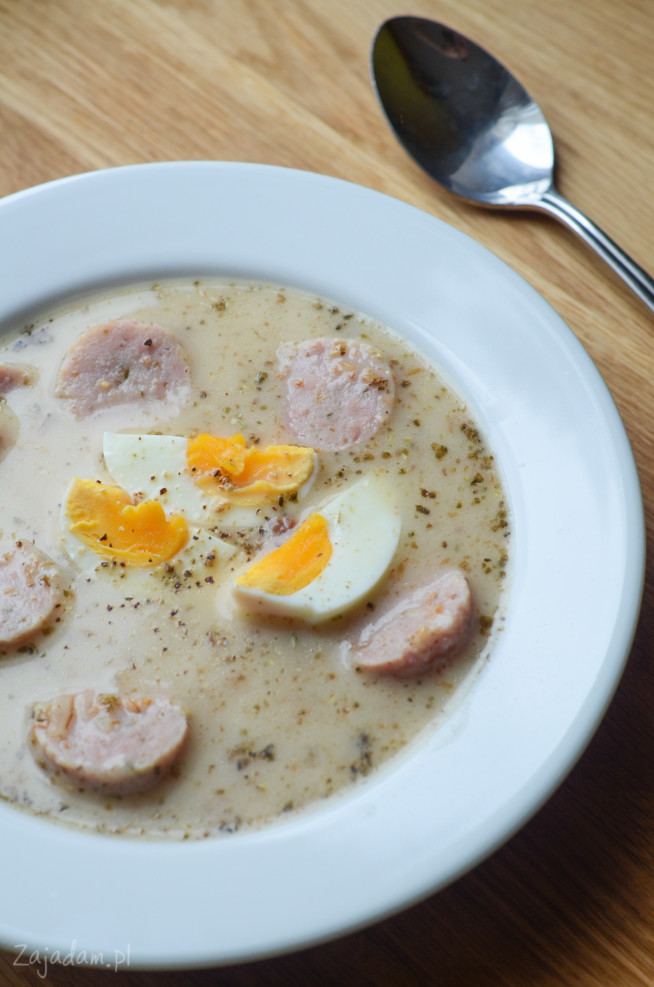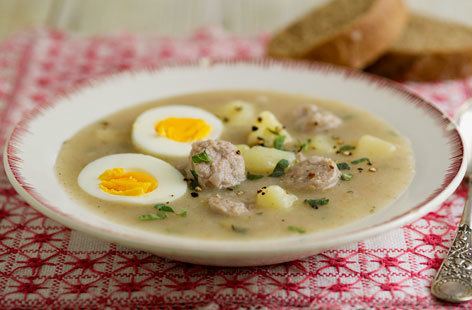Alternative names Żur Serving temperature Hot Place of origin Poland | Course Soup, Entree Food energy
(per serving) 1500 kcal (6280 kJ) | |
 | ||
Main ingredients soured rye flour; sausage, bacon, or ham Variations Barszcz biały (Poland), Kyselo (Czech Republic), Kyslóvka (Slovakia) Similar Borscht, Bigos, Weisswurst, Kotlet schabowy, Pierogi | ||
Sour rye soup zurek recipe 85
The sour rye soup (Polish: żur, żurek; Belarusian: жур, кісяліца;, zhur, kisyalitsa; Czech: kyselo) is a soup made of soured rye flour (akin to sourdough) and meat (usually boiled pork sausage or pieces of smoked sausage, bacon or ham). It is specific to the cuisines of Poland and Belarus, where it is known as żur or żurek (diminutive). A variant made with wheat flour instead of rye is known in Poland as barszcz biały ("white borscht"). Varieties of this soup are also found in the cuisines of other western Slavic nations such as Slovakia (kyslóvka) and Czech Republic (kyselo – with mushrooms and without meat).
Contents

Sour rye soup starter zakwas na zurek recipe 84
Poland
In Poland it is sometimes served in an edible bowl made of bread or with boiled potatoes. The recipe varies from region to region.
In Silesia, a type of sour rye soup known as żur śląski is served in a bowl, poured over mashed potatoes. In the Podlaskie region, it is common to eat żurek with halved hard-boiled eggs.
In Poland żurek is traditionally eaten at Easter, but is also popular during other parts of the year. It is sometimes flavored with bits of sausage, usually eaten with bread or buns, or even served in a bowl made from bread.
The Polish name 'żur' (diminutive: 'żurek') comes from the Middle High German word 'sūr' ('sauer' in modern German), meaning sour.
